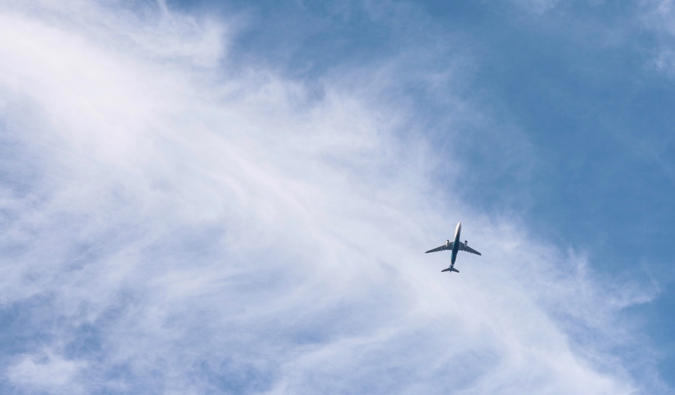
Posted: 7/12/2019 | July 12th, 2019
Travel insurance is probably the most boring topic when it comes to planning a trip. Nobody wants to focus on the worst-case scenario before they even leave home.
Plus, researching insurance is just plain tedious. There is a lot of fine print to scour, requiring you to read over the minutiae of each insurance plan before you pick the one that’s best for you.
But it’s also the most important topic too. Should something terrible happen while you’re on the road, you want to have the confidence that your insurance plan will cover you.
While none of us want to imagine getting hurt or robbed or having to cancel our plans, the fact of the matter is that these things happen. It’s rare, but shit you don’t expect does happen when you travel.
I never expected to break my camera in Italy.
I never expected to rupture my eardrum scuba diving in Thailand.
I never expected to get stabbed in Colombia.
And while these unfortunate events are few and far between, it’s always better to be safe than sorry (trust me!). Medical bills aren’t cheap. Emergency evacuations cost tens of thousands of dollars. Unless you have a stockpile of disposable income, chances are you’ll want to buy travel insurance for your next trip.
There are a lot of misconceptions about travel insurance, so you’ll also want to learn everything you can about your plan and the company that is covering you.
Will your plan cover pre-existing conditions? Is there an age limit or a limit on how long you can be out of your home country? Will you be able to see doctors for non-emergency visits? What about dental coverage?
There is a lot to learn, and it can be overwhelming if travel insurance is new to you.
Fortunately, it doesn’t have to be!
In this post, I’ll go over what is ACTUALLY covered by reputable travel insurance plans, so you know what to look for.
What Travel Insurance DOES Cover
Medical Emergencies
Chances are when you think of travel insurance, you’re picturing a medical emergency.
While accidents or serious illnesses while traveling abroad are rare, here’s what you can expect to be covered by a reputable insurance company:
- Your hospitalization fee
- Surgery costs
- Outpatient treatment costs
- Visits to registered medical practitioners (relating to your emergency injury)
- Prescribed medicines (relating to the injury)
- Medical evacuation (usually this is just to a local medical facility unless you have a more comprehensive plan from a company like MedJet. See below for more on evacuation.)
Emergency Evacuation
Medical evacuations due to accidents or natural disasters can cost upwards of $500,000. Naturally, this is where having a solid insurance plan comes in handy. Most insurance plans will evacuate you to a local hospital in case of injury or a nearby location in the case of a natural disaster.
In some cases, you will be repatriated back to your home country as well (though this is rare and usually only occurs in cases where local medical staff can’t provide the assistance you need).
Dental Emergencies
As with other medical emergencies, what’s covered here is accidental injury and sudden pain. For example, chipped teeth or a sudden infection.
General checkups are not covered, nor is major dental work that doesn’t relate to an injury or accident sustained abroad. And if you just want your teeth cleaned or a new filling, you’ll have to pay for that out of pocket.
Death Overseas
I know it’s never fun thinking about something like this happening, but knowing that you’re covered will give you and your loved ones peace of mind.
Should the worst happen, most insurance plans will cover the costs of a family member coming to get your body to take it home. Some policies will also include cremation services or burial overseas, should that be preferred.
Common exclusions would include death from alcohol or illicit narcotics, suicide, or pre-existing conditions not covered by the plan.
Flight Delays and Cancellations
If your flight gets delayed or canceled, you can apply for compensation from your travel insurance provider (assuming the airline doesn’t provide coverage for you). As long as the cancellation or delay is not your fault, you can apply for reimbursement. However, if you miss your flight because you slept in, that doesn’t count as a valid reason!
Be sure to keep all emails, receipts, and correspondence from your airline regarding the delay or cancellation, as you’ll need them to verify your claim and get reimbursed.
Trip Cancellation
If you need to cancel your trip — either before you depart or during your trip — for a verified medical reason, the death of a close relative, or the death of your travel partner, you can apply to get reimbursed from your insurance company.
To verify your claim, be sure to get a note from your doctor if you’re canceling due to illness. If you’re canceling due to a death, you’ll need to submit a copy of the death certificate (as well as other supporting documentation).
Lost or Stolen Property
If your bags get stolen while you’re traveling, most travel insurance companies will reimburse you for some or all of the items (there are usually limits on gear like laptops and cameras unless you buy a comprehensive plan with additional coverage). Be sure to file a police report. It will be necessary for making a claim.
Coverage will usually include compensation for delayed baggage or baggage that’s damaged in transit as well.
If your wallet or passport is stolen, some plans will cover the cost of having a new passport or credit card mailed to you (this usually will depend on your residency). If your wallet is stolen with cash in it, most plans won’t reimburse you for the cash. One exception is the Explorer Plan from World Nomads, which covers up to $200 USD in cash compensation.
Damaged or Stolen Gear
Most travel insurance plans will include coverage for lost or stolen gear, such as laptops, cameras, and mobile phones. However, these high-ticket items usually have a cap on how much you’ll get back (usually under $1,000 USD per item). If you’re traveling with expensive gear, you’ll want to pay for supplementary coverage to make sure it’s sufficiently covered.
Be sure you have receipts for all your gear as well. Keep copies of them in your inbox, so if something happens, you can file your claim without having to track down copies.
What Travel Insurance Does NOT Cover
While every plan is different, here is a list of the most common things that will not usually be covered by your standard or basic travel insurance plan:
- Accidents sustained while participating in extreme activities, like hang gliding, paragliding, or bungee jumping (though you can often upgrade to plans that do cover those activities)
- Technical climbing or alpine hiking (again, some plans can be upgraded to cover these activities)
- Alcohol- or drug-related incidents (including death)
- Carelessness in handling your possessions and baggage
- Pre-existing conditions. For example, if you have diabetes and need to buy more insulin, you won’t be covered
- General checkups for non-emergencies
- Stolen cash (usually not covered by the standard “theft coverage,” though some companies, like World Nomads, can insure a limited amount of your cash)
- Missed flights or connections for reasons under your control
A few other notes about standard policies:
- If civil unrest makes your destination unsafe but your government hasn’t called for an evacuation, most insurance companies won’t evacuate you. (MedJet is the exception here. They have the best evacuation coverage.)
- Changing your mind about your trip, unfriending or breaking up with your travel partner, and pre-existing medical conditions don’t qualify for most trip cancellation plans
- If your visa is refused, you likely won’t be reimbursed if you decide to cancel your trip
Suggested Companies
To help you stay safe on your next trip, here’s a list of the best travel insurance companies:
 My favorite company is World Nomads. I’ve been using them since I started traveling all the way back in 2003. They are reliable, and claims are processed quickly and fairly. The company was built by an ex-nomad so he gets the traveler mindset and knows what travelers need to stay safe.
My favorite company is World Nomads. I’ve been using them since I started traveling all the way back in 2003. They are reliable, and claims are processed quickly and fairly. The company was built by an ex-nomad so he gets the traveler mindset and knows what travelers need to stay safe.
As someone who is often traveling, I prefer World Nomads because I can purchase and renew my insurance policy online in a matter of minutes (it’s super easy). They have a very friendly and responsive staff who answer questions and help solve problems via social media, they have great customer feedback, and most importantly, they provide a lot of coverage at a fair price.
They are also endorsed by Lonely Planet and National Geographic, which tells you how good they are!
Other good travel insurance companies to consider
- Best high-end electronics coverage.
- Affordable deductables.
- Up to 5 million in coverage.
- Available inside and outside of the USA.
- Best for people living overseas.
- The closest thing to normal health insurance.
- Available for non-US residents.
- 25 different places to choose from.
- Short-term and annual plans.
- Extensive medical transport coverage.
- Available for residents of USA, Canada, and Mexico
- Limited time spent in foreign medical facilities.
- Affordable plans.
- Basic coverage options.
- Great for students/shoestring backpackers.
- Applicable accounts include a free student discount card.
- Compare plans from 28 providers.
- Best company for over 65.
- “Anytime advocates” ask insurer to give your claim a second look if you think it was unfairly denied.
- Guaranteed low prices.
***
These days, I never leave home without travel insurance. Having had to make emergency claims a few times over the years, I’ve learned the hard way that it’s always better to be safe rather than sorry.
Just remember that travel insurance is a for-profit industry, which means you really need to do your research before you purchase a plan. Be sure to read your plan and the fine print so you know what exactly is covered and what they expect if you try to make a claim.
Keep any receipts, emails, and documentation relating to your trip in a separate folder in your email inbox. That way, you can easily make a claim if you need to.
While the cost can seem like a lot up front, when you compare it to the potential cost of an emergency evacuation or a hefty medical bill, it’s peanuts.
Most insurance plans will only cost you a few dollars per day, providing you — and your friends and family — peace of mind in the process. If you ask me, that’s money well spent.
Book Your Trip: Logistical Tips and Tricks
Book Your Flight
Find a cheap flight by using Skyscanner or Momondo. They are my two favorite search engines because they search websites and airlines around the globe so you always know no stone is left unturned.
Book Your Accommodation
You can book your hostel with Hostelworld as they have the largest inventory. If you want to stay somewhere other than a hostel, use Booking.com as they consistently return the cheapest rates for guesthouses and cheap hotels. I use them all the time.
Don’t Forget Travel Insurance
Travel insurance will protect you against illness, injury, theft, and cancellations. It’s comprehensive protection in case anything goes wrong. I never go on a trip without it as I’ve had to use it many times in the past. I’ve been using World Nomads for ten years. My favorite companies that offer the best service and value are:
The post What Does Travel Insurance ACTUALLY Cover? appeared first on Nomadic Matt's Travel Site.

Posted: 7/8/2019 | July 8th, 2019
I love visiting Paris. I’ve been going there for over nine years and have yet to tire of the history, the charm, or the food (and wine!).
Over the years, I’ve taken a million different tours of this amazing city to learn more about what makes it tick. For four months earlier this year, I lived in Paris, and had the opportunity to check out even more walking tours.
And there were a lot to check out!
There are dozens upon dozens of companies covering all aspects of life in Paris, and it can be hard to make a sense of all those endless Viator and Tripadvisor listings. It’s obscene how many tour companies there are. (I mean I’ve tried so many tour companies and I STILL have more on my list to try (and some to retry).)
But, I still feel like I’ve done enough to warrant a post on some of the best walking tour companies in Paris, so, today, I want to share with you my top favorites:
1. New Europe Tours
New Europe is one of the most popular free walking tour companies in all of Europe. Their main free tour takes you around the center of Paris and gives you a historical overview of the city. They also run a good (but paid) tour of Montmartre, and they have a really fun pub crawl as well if you’re looking to hit the bars with other travelers.
The basic tour will last around three hours and is free, though you’ll want to tip your guides. Some tours cost 15-35 EUR per person.
—> Click here to book your tour with New Europe!
2. City Free Tour
This free-tour company, like New Europe, offers a couple great general tours to help you get familiar with the City of Light, led by a local expert who can answer your questions. They also offer a few specialized tours so you can really focus on different neighborhoods. For example, the Montmartre tour does a great job of showing you just what life is like in this famous bohemian neighborhood, while the Latin Quarter tour highlights some of the most famous landmarks in town.
Tours are free and last around three hours. Just be sure to tip! Private tours are available upon request for an additional fee.
—> Click here to book your tour with City Free Tour!
3. Discover Walks
Discover Walks offers free walking tours, as well as paid options if you’re looking for something more focused and in-depth. With almost 30 tours on offer in Paris, chances are you’ll be able to find something to pique your interest. They have a great free tour of the Latin Quarter, and there’s even a vegetarian and gluten-free food tour! For something more unique, try the photography tour.
Free tours last around 90 minutes. A recommended tip of 13 EUR is suggested. For the paid tour options, prices start at 25 EUR per person.
—> Click here to book your tour with Discover Walks!
4. Localers
Localers are a great choice if you’re looking for a unique tour option and want something more nuanced than just a free walking tour. They tend to specialize in more niche tours like literary, art or historical tours. I enjoyed their tours a lot. I hadn’t heard of them before I moved here and was bummed their tours had flown under my radar for so long.
The World War II tour is particularly insightful and does a great job of illuminating the war’s true cost to Paris. I also really liked the Scandalous Paris tour, which highlights Paris’ brothels and more colorful past. There’s also an insightful literary tour too that takes you through the literary history of the city’s left bank. This is a solid mid-range tour company for travelers looking for value.
Tours last 2-5 hours. Tickets start at 58 EUR per person.
—> Click here to book your tour with Localers!
5. Context Travel
Context Travel hires experts in their fields so that every tour is an incredible educational experience and you’ll go much deeper than any free walking tour does. I am always shocked by how much I learn! I particularly love the Paris Market Tour and the Versailles Tour (which is four hours long, but you learn a ton). Context isn’t cheap, and the tours are usually long — but they’re worth every penny if you’re serious about really learning a lot.
Tours start at 100 EUR per person. They include a maximum of six people at a time.
—> Click here to book your tour with Context!
6. Walks
What makes Walks amazing is that they get better access than most tour companies and hire specialized guides. You get to skip the line, go before or after other tours so you have the space to yourself, and get fun guides who are knowledgeable in their field. They also have a nine-hour full-day tour of the city for anyone looking to really explore (it’s a great option if you’re short on time but still want to see everything).
Their tours are reasonably priced, and their guides always know their stuff. I’ve gone on three of their tours and loved them all.
Most tours last 2-3 hours, though some take the entire day. Tickets start at 55 EUR per person.
—> Click here to book your tour with Walks!
7. Fat Tire Tours
Offering cycling tours of Paris, Fat Tire Tours are probably the best bike tour in town. I don’t think I’d go with anyone else. Their bike tours are the best. Do their Versailles tour – and try to do it on Sunday or Tuesday when they stop at the market that is open then) and, if you can, check out their Monet’s Garden tour where you can cycle around the gardens of the famous impressionist while exploring the charming village of Giverny.
Most tours last 2-3 hours, though there are several full-day options available too. Tickets start at 34 EUR per person.
—> Click here to book your tour with Fat Tire Tours!
8. Paris by Mouth
Paris by Mouth company offers a handful of neighborhood tours that highlight the best food in Paris. The groups are kept small (no more than eight people) and they are really focused on providing a lot of information on food, history, and culture. It’s like a mini-class more than it is a chance to just eat food (though you do that too).
The tours aren’t super budget friendly but if you’re looking for a really detailed food tour, this company would be it. And if you’re a diehard fan of French cheese like I am, they also have an entire workshop just for cheese. It’s amazing.
Tours usually last around three hours. Tickets start at 110 EUR per person.
—> Click here to book your tour with Paris By Mouth!
9. Secret Food Tours
While not the cheapest, Secret Food Tours offers neighborhood-specific food tours. They also have a dangerously delicious pastry and chocolate tour that will take you around to half a dozen bakeries and shops to give you a firsthand experience of Paris’s love of decadent desserts. You’ll get A LOT of food during the tour, so come hungry. Be sure to avoid Monday tours, when most markets are closed and you end up just eating in one location instead of going from shop to shop.
Tours last 2-3 hours. Tickets start at 89 EUR per person. They can sell out weeks in advance, so be sure to reserve early!
—> Click here to book your tour with Secret Food Tour!
10. Eating Europe
Eating Europe’s Paris food tour, Hip Eats and Backstreets, is one of the most sought-after food tours in town. You’ll have the opportunity to try some of the best foods in Paris while also getting to chat with the chefs and entrepreneurs who have brought the dishes to life. It’s not just a tour where you get to eat amazing food but rather an experience during which you’ll learn about the culinary traditions and innovations firsthand from local artisans. It’s the perfect tour for any die-hard foodies.
Tours last four hours and they depart at 12:30pm Tuesday through Saturday. Tickets are 95 EUR per person.
—> Click here to book your tour with Eating Europe!
11. Street Art Tour Paris
For an insider, niche tour about Paris’s art scene, check out Street Art Tour Paris. Their guides are all artists and will take you around various neighborhoods to show you the best and most interesting works of street art (and murals) that Paris has to offer. They also have a tour that focuses exclusively on female artists.
Tours operate 2-3 times per week based on interest (usually on the weekends) and last around 2.5 hrs. Tickets start at 20 EUR per person.
—> Click here to book your tour with Street Art Tour Paris!
12. Paris Bar Crawl
If you’re looking for a more rambunctious way to spend an evening, head out on a pub crawl. Paris Bar Crawl is one of the most popular ones (it tends to be just for tourists and visiting students though). You’ll meet a bunch of new people while seeing what nightlife in Paris is all about. The tour visits three bars and one club.
Tours start at 8:30pm Thursday-Saturday and last until you decide to go home! Tickets are 15 EUR per person and include three shots as well as admission to a club.
—> Click here to book your tour with Paris Bar Crawl!
***
Walking tours are a great way to get below the surface of Paris. Every time I visit, I always make sure to try a new one. Having an expert guide to answer your questions while providing in-depth, local knowledge is the best way to deepen your experience as a traveler.
These walking tour companies are the best in Paris and will be able to provide you with the insight and information you need to really make the most out of your next visit to this incredible city.
Book Your Trip to Paris: Logistical Tips and Tricks
Book Your Flight
Find a cheap flight by using Skyscanner or Momondo. They are my two favorite search engines because they search websites and airlines around the globe so you always know no stone is left unturned.
Book Your Accommodation
You can book your hostel with Hostelworld. If you want to stay somewhere other than a hostel, use Booking.com as they consistently return the cheapest rates for guesthouses and cheap hotels. I use them all the time. Some of my favorite places to stay in Paris are:
- St. Christopher’s Canal – Comfy spot on the canal. During the summer months, the terrace is hopping!
- 3 Ducks Hostel – This hostel has one of the cheapest bars in the city, and it’s just a 10-minute walk to the Eiffel Tower.
- Les Piaules – Fantastic chimney lounge, a cool bar, and a rooftop space. It’s a great place to meet people!
Don’t Forget Travel Insurance
Travel insurance will protect you against illness, injury, theft, and cancellations. It’s comprehensive protection in case anything goes wrong. I never go on a trip without it as I’ve had to use it many times in the past. I’ve been using World Nomads for ten years. My favorite companies that offer the best service and value are:
Looking for the best companies to save money with?
Check out my resource page for the best companies to use when you travel! I list all the ones I use to save money when I travel – and I think will help you too!
Looking for more information on visiting Paris?
Check out my in-depth destination guide to Paris with more tips on what to see, do, costs, ways to save, and much, much more!
The post The Best Walking Tours in Paris appeared first on Nomadic Matt's Travel Site.
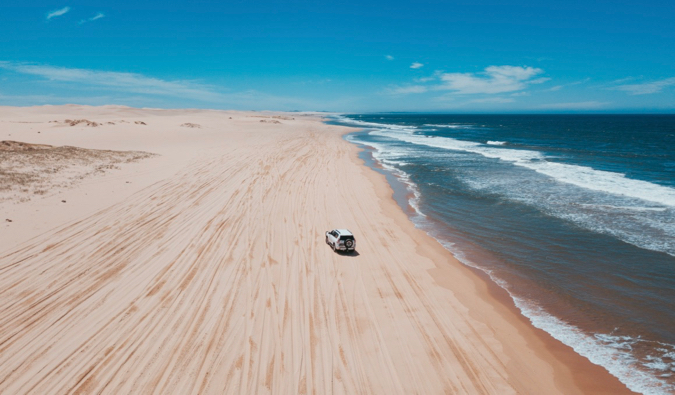
Posted: 7/6/2019 | July 6th, 2019
Few countries capture the imagination quite like Australia. With world-class beaches, unusual wildlife, stunning natural landscapes, a unique history, and a fun and vibrant culture, Australia has something to offer every traveler who makes the journey to the Land Down Under.
While the country is easy to navigate as a solo traveler, there are also plenty of amazing tour options for those who prefer traveling in groups or who might not have the time to plan their own getaway.
I’ve been visiting Australia since 2006 and have used many tour companies over the years (in addition to getting around on my own). So in this post, I share my list of the best travel companies in Australia to help you make the most out of your next trip.
From simple walking tours to in-depth, multi-day excursions, there’s something on the list for every interest — and every budget!
1. Best Bike Tour Company: Bonza Bike Tours

Bonza is a bike tour company in Sydney that offers a number of options, depending on what you’re interested in. The Highlights tour lasts 2.5 hours and will show you all the major points of interest in Sydney. It’s suitable for families and kids as well, costing 99 AUD ($68 USD) for adults and 79 AUD ($54 USD) for children. For a more in-depth experience, the Classic tour lasts four hours and will give you a much more thorough introduction to this world-class city. They also offer bike rentals so you can just explore the city on your own in case you don’t have the time for a full-tour.
—> Click here to learn more about Bonza!
2. Best Walking Tour Company: I’m Free
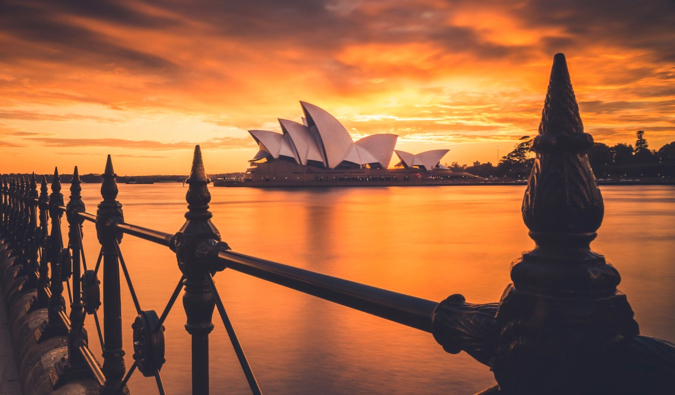
I always like to start a trip with a free walking tour, as they are a helpful way to get oriented and ask a local all my questions. Both Sydney and Melbourne have insightful (and free!) walking tours offered by I’m Free. Their tours last 2-3 hours and are a great way to learn about history and culture from a local. There are a few tour options in each city, so you have some flexibility with timing as well as which areas you focus on.
If you haven’t done much research before your arrival, this is a good company to start with. Be sure to tip your guide at the end!
—> Click here to learn more about I’m Free!
3. Runner Up Walking Tour Company: iCity Tours
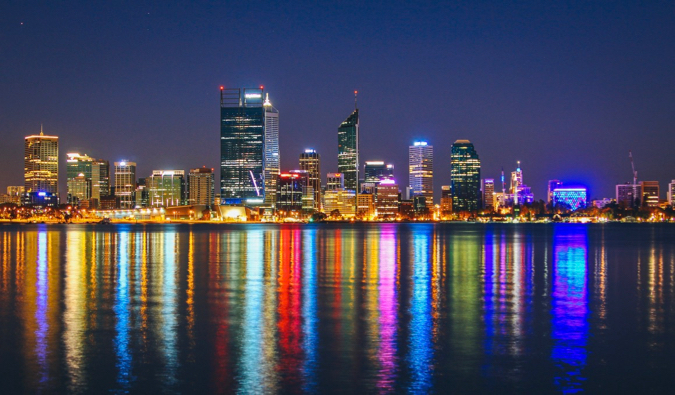
If you find yourself all the way out in Perth, iCity Tours has a handful of awesome free walking tours. They are organized by Visit Perth and run by volunteers, so it’s a fun way to interact with the locals and really get a sense of what life is like in Australia’s underrated coastal city.
There are five different free tours on offer, each lasting around 90 minutes. The Orientation tour offers a quick introduction to the city and its past. If you have more time, be sure to check out the Convicts and Colonials tour as well. It will give you a sense of what life was like as a convict in Western Australia.
—> Click here to learn more about iCity Tours
4. Best Party Tour Company: The Magic Bus
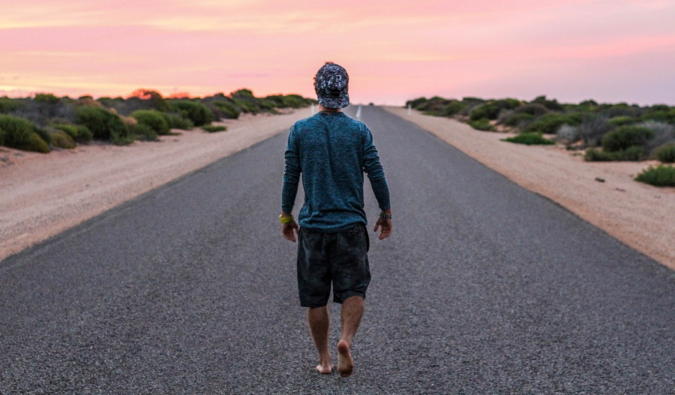
This backpacker bus is the perfect choice for travelers looking to party. Each month, the trip departs with 25 backpackers aged 18-35 for 3-4 weeks of exploring the country’s national parks, camping, bonfires, and non-stop parties and shenanigans.
Trips go from Perth north to Broome or east to Melbourne each month, so you have to time your trip accordingly to line up with the set departure. The itineraries are always flexible, as they let riders vote on where to go and what to do, so every trip is unique. They try to keep a balance of 50% men and 50% women, as well as a balance of different nationalities, so there is always a diverse group. Trips begin at 1,200 AUD ($822 USD) per person.
—> Click here to learn more about The Magic Bus!
5. Runner Up: The Oz Experience

With The Oz Experience, you’ll get a pass for 60-90 days. Instead of guides, you’ll be given a list of activities (such as diving, ATV trips, sailing, and surfing camps) that are included in your pass to do whenever you want, based on your schedule. It’s a flexible compromise for people looking for some guidance but who also want independence. Prices vary from 1,139 to 3,519 AUD ($781 to $2,412 USD) depending on how many excursions are included (as well as how many days your bus pass is valid for).
While this is a hugely popular option, I personally dislike this company. I really found it lacking, so I would skip this and take The Magic Bus instead. While lots of people like The Oz Experience, I just didn’t find good value for the money.
—> Click here to learn more about The Oz Experience!
6. Our Top Tour Pick: Intrepid Travel
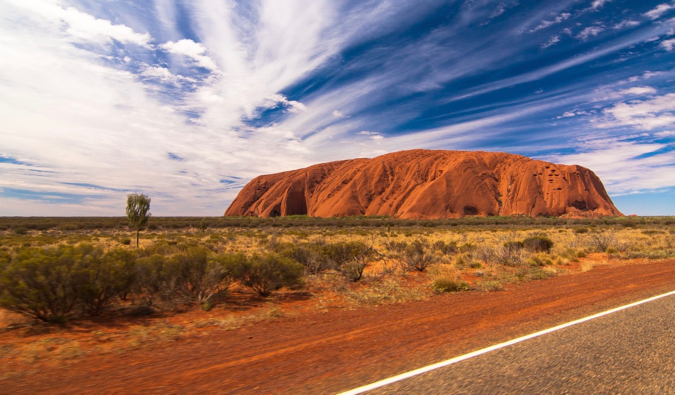
Intrepid is my go-to travel company when it comes to multi-day excursions. In Australia, they offer 70 different itineraries to choose from, ranging from a quick two-day tour to an in-depth 24-day adventure around the entire country.
Unlike some of the companies above, this is not a party tour. They are small groups led by expert local guides with a focus on culture, history, and food, as well as ethical travel and leaving a small environmental impact. You’re guaranteed to return home with a much deeper and more nuanced appreciation of your destination.
And you’ll get a much broader range of ages and travel styles with Intrepid tours too (it’s not just for backpackers). With such a wide range of travelers choosing Intrepid tours, you always end up with an awesome group of people to travel with.
I’ve been on a handful of their tours over the years and have never been disappointed. I always learn a ton and meet amazing people. They make sure you have enough things to do without planning out every minute of the day, so it’s a good balance of downtime and tours. I can’t recommend them enough.
Best of all, as a Nomadic Matt reader, you’ll get an exclusive discount on their tours every month!
—> Click here to learn more about Intrepid Travel and the exclusive offers for Nomadic Matt readers!
***
Australia is a massive country, offering beautiful landscapes, fun outdoor activities, a wild nightlife, and incredible history.
Whether you’re looking for a quick walking tour or a monthlong cross-country adventure — or something in-between — there are plenty of amazing tour companies in Australia to help you make the most out of your time Down Under, no matter your budget.
P.S. – Did you know I wrote a new book? It’s called “Ten Years a Nomad” and it’s all about the lessons I’ve learned from a life of travel. It features tons of stories and misadventures I’ve never told on this blog as well! It comes out July 16th! Click here to learn more and grab your copy today! (I’ll be going on a book tour too!)
Book Your Trip to Australia: Logistical Tips and Tricks
Book Your Flight
Find a cheap flight by using Skyscanner or Momondo. They are my two favorite search engines, because they search websites and airlines around the globe, so you always know no stone is being left unturned.
Book Your Accommodation
You can book your hostel with Hostelworld. If you want to stay somewhere other than a hostel, use Booking.com as it consistently returns the cheapest rates for guesthouses and cheap hotels. I use it all the time. It’s my favorite website! Here are my favorite hostels in Australia!
Don’t Forget Travel Insurance
Travel insurance will protect you against illness, injury, theft, and cancellations. It’s comprehensive protection in case anything goes wrong. I never go on a trip without it, as I’ve had to use it many times in the past. I’ve been using World Nomads for ten years. My favorite companies that offer the best service and value are:
Looking for the best companies to save money with?
Check out my resource page for the best companies to use when you travel! I list all the ones I use — and I think they will help you too!
Looking for more information on visiting Australia?
Check out my in-depth destination guide to Australia with more tips on what to see and do, costs, ways to save, and much, much more!
Photo credits: 1 – Bonza Bike Tours
The post The Best Tour Companies in Australia appeared first on Nomadic Matt's Travel Site.

Posted: 7/6/2019 | July 6th, 2019
Central America is one of my favorite regions for backpacking. While it can be challenging to get around, it also offers incredible beauty, abundant nature, picturesque beaches, and affordable prices.
Political upheaval and civil unrest kept tourists at bay for a long time, however. But these days the area has developed into something of a hotspot for travelers, surfers, and retirees.
Why?
Because Central America has something for everyone!
But is it safe?
Yes — but that doesn’t mean you don’t need to take precautions.
In this post, I’ll go over everything you need to know to stay safe and have an amazing trip in this incredibly diverse region!
What Countries are in Central America?
There are seven countries in Central America:
Click on the map for country guides:

Central America
8 Important Safety Tips for Central America
While Central America is considered generally safe for traveling and backpacking, there’s no denying that some precautions should be taken.
- Be aware of your surroundings – It can be easy to stop paying attention and let your guard down. But that’s when disaster strikes. Always be aware of your surroundings.
- Avoid isolated areas – If you’re somewhere isolated, you’ll be at a greater risk for getting robbed, especially at night and in big cities. Try to stay where the crowds are. That’s the best way to avoid being singled out by potential muggers.
- Don’t wear flashy items – Petty theft is the most common threat here, so remove any jewelry or watches, and don’t wave your phone around. Do your best to blend in, so you don’t become a target for pickpockets.
- Separate your cash – Keep only the money that you need for the day on you. Keep the rest locked away safely at your accommodation.
- Take taxis at night – If you need to get somewhere at night, take a taxi. It will be safer than any public transportation. Have your accommodation call the taxi for you, so you can be sure you’re getting a reputable driver.
- Be careful on public transit – If you have to take public transit, keep your valuables on you and keep them well secured, especially on chicken buses (colorful, modified, and decorated buses that transport goods and people). Petty theft is common on night buses, so avoid them if you can.
- Don’t do drugs – The cartels here have really made life difficult for the local population. Don’t support them by buying their products. Drug penalties are also harsh in the region, and you don’t want to end up in jail here!
- Buy travel insurance – Travel insurance will keep you protected if you get injured or ill, are a victim of theft, or have to deal with delayed or canceled flights. It’s a worthwhile investment and can save you thousands of dollars. Don’t risk traveling without it!
At the end of the day, you’ll just need to always trust your gut instinct. If a taxi driver seems shady, stop the cab and get out. If your hotel is seedier than you thought and seems unsafe, get out of there and find a new place to stay. You have every right to remove yourself from such situations, so do what you need to do to feel safe.
What is the Northern Triangle? Is it Safe?
The Northern Triangle comprises Guatemala, El Salvador, and Honduras. It’s the region of Central America that traditionally (and currently) has the most crime and violence. This is usually concentrated in the larger cities, and particularly in specific neighborhoods. If you’re going to be in the capital cities of any of these three countries, you’ll want to talk to your hostel or hotel staff for the most up-to-date safety advice.
That being said, if you’re visiting tourist areas or going on nature excursions, then you won’t have any issues here as long as you follow the safety advice above.
What is the Safest Country in Central America?
Costa Rica, which provides safety and stability alongside incredible natural beauty. Of course, prices are also much higher and reflect the country’s status as “the Switzerland of Central America.”
If you’re new to backpacking and want to start off somewhere that offers a good mix of adventure and safety, go for Costa Rica. It was the first country I ever backpacked in, and I absolutely loved it!
In terms of safety, the next best place is Panama. It’s home to a growing community of expats and retirees, which is giving the country an economic boost and making it a bit more gringo friendly. That means you’ll be able to get lots of great tips and suggestions (including specific, local safety tips) from the expat community while still having yourself an adventure.
Coming in strong behind Panama is Belize. It does a great job of balancing safety with plenty of things to see and do!
Is Central America Safe for Solo Travelers?
Central America is quite safe for solo travelers. As long as you avoid isolated areas and don’t travel alone at night, you’ll be able to avoid the most common issues tourists face, such as petty crime.
If you’re worried that you won’t feel safe, try to join a group of other travelers or invite people from your hostel to join you when you go out. That way, you’ll be able to feel safe while also getting to connect with other people.
As a solo traveler, be sure to scan your passport and other important documents and email them to yourself in case you do happen to run into trouble.
Additionally, be sure to download offline maps and offline language apps so you can look up directions if you get lost or communicate with the locals in an emergency. If you can, try to learn some Spanish before you go too. Even a few key phrases can go a long way!
Is Central America Safe for Solo Female Travelers in Particular?
Solo female travelers will need to be more on guard during their time in Central America. Costa Rica, Panama, and Belize are the safest countries in the region. If you’re new solo female travel, stick to these countries.
Outside of those three countries, I’d suggest new solo female travelers stick to group travel or tours, just to be safe. However, experienced solo female travelers should be able to navigate the region without too much additional concern.
Women should be extra careful in large cities, though, especially at night. Beyond that, as long as you follow the usual precautions, you’ll be able to have an amazing time!
Are Taxis Safe in Central America?
The taxis in Central America are safe and reliable, though you’ll always want to make sure you’re getting in marked taxi. Never get in an unmarked car.
During the day, you can hail a taxi from the street safely, but you’ll want to be aware of the local custom, as some countries’ taxis use meters and others require you to negotiate a price in advance.
If taking a taxi at night, have your accommodation call it for you. Never hail a random taxi at night.
Can You Eat the Street Food in Central America?
You bet you can! You’ll find all sorts of amazing street food stands and local restaurants in Central America, and you’d be missing out if you didn’t try them! Just make sure to stick to places where there are a lot of locals gathered. That’s how you know the food is not only safe but delicious too!
For the most part, you’ll encounter places that sell various kinds of chicken. As long as it is fully cooked (not pink on the inside) and hasn’t been in the sun all day, dive in and give it a try! A lot of food here will also be deep-fried, which will almost always be safe (just not healthy).
Don’t hesitate to ask your hotel or hostel staff for street food or restaurant suggestions. They’ll no doubt have some delicious — and perfectly safe — ones for you.
Can You Drink the Water in Central America?
As a general ruled you’ll want to avoid the tap water in Central America, although it’s likely fine in Costa Rica and Panama.
The best way to make sure your drinking water is safe is to bring a Steripen or Lifestraw for your reusable water bottle. This way you’ll be able to purify the tap water so you don’t get sick — and avoiding single-use plastic bottles in the process.
***
With so many affordable accommodation and transportation options, stunning landscapes, plentiful outdoor adventures, and beautiful beaches, it should come as no surprise that Central America is one of the most backpacked regions of the world.
Sure, it might get a bad rap due to its violent history and economic struggles, but that doesn’t mean it’s categorically unsafe. By following the tips above, you’ll be able to stay safe and healthy during your next visit!
P.S. – Did you know I wrote a new book? It’s called “Ten Years a Nomad” and it’s all about the lessons I’ve learned from a life of travel. It features tons of stories and misadventures I’ve never told on this blog as well! It comes out July 16th! Click here to learn more and grab your copy today! (I’ll be going on a book tour too!)
Book Your Trip to Central America: Logistical Tips and Tricks
Book Your Flight
Find a cheap flight by using Skyscanner or Momondo. They are my two favorite search engines because they search websites and airlines around the globe so you always know no stone is left unturned.
Book Your Accommodation
To find the best budget accommodation, use Booking.com as they consistently return the cheapest rates for guesthouses and cheap hotels. You can book your hostel with Hostelworld as they have the most comprehensive inventory. Some of my favorite places to stay in Costa Rica:
- Dirty McNasty (Caye Caulker, Belize) – This is one of the biggest hostels in the country and a hub for party-goers. If you’re looking to let loose, this is the hostel for you!
- Rocking J’s (Puerto Viejo, Costa Rica) – This an institution in Central America. The hostel has been there for ages and there’s a beautiful white sand beach in front of it. They have nightly BBQs.
- The Naken Tiger (San Juan del Sur, Nicaragua) – Located in San Juan del Sur, the Naked Tiger is an incredible property nestled a bit far out of town but on top of a hill with a beautiful view of the entire area.
Don’t Forget Travel Insurance
Travel insurance will protect you against illness, injury, theft, and cancellations. It’s comprehensive protection in case anything goes wrong. I never go on a trip without it as I’ve had to use it many times in the past. I’ve been using World Nomads for ten years. My favorite companies that offer the best service and value are:
Looking for the best companies to save money with?
Check out my resource page for the best companies to use when you travel! I list all the ones I use to save money when I travel – and I think will help you too!
Want More Information on Central America?
Be sure to visit our robust destination guide on Central America for even more planning tips!
The post Is Central America Safe to Visit? appeared first on Nomadic Matt's Travel Site.

















